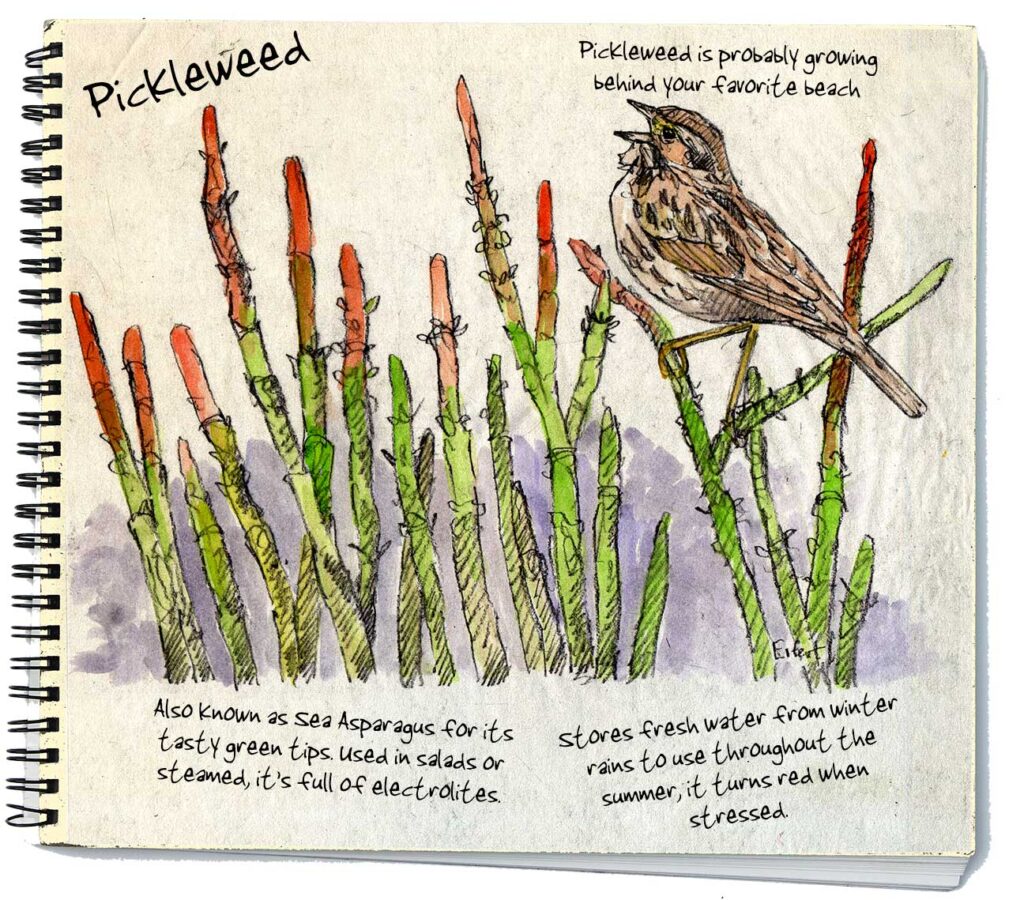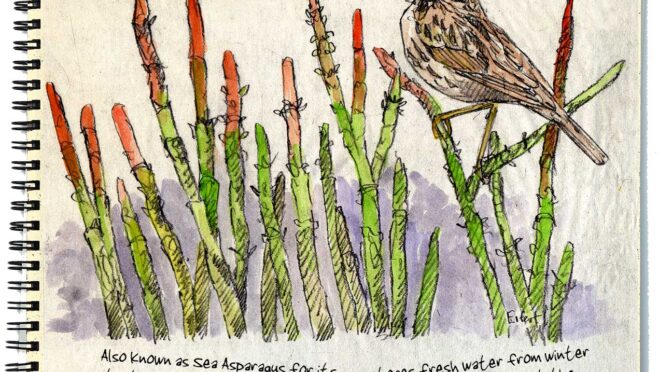
Most good anchorages in the Pacific Northwest are in shallow bays, and many are in front of barrier beaches with salt marshes filling in behind. Salt marshes are simply flat sheltered meadows where fresh and ocean water mix, creating a rich habitat where plants can tolerate a diluted saltwater environment. Most have now been filled in for farms and homes, but where these places still exist, you’ll find a wealth of plants not found anywhere else. Pickleweed is one, with lush meadows of this strange (to us) plant that tastes somewhat like a fresh pickle.
In winter, it looks like little dead brown fingers pointing skyward, but then spring comes and bright green new growth appears sporting tiny leaves and even smaller flowers that cannot be easily seen. Pickleweed can survive here because it can store fresh water during the rainy spring growing season, and then use it during the drier summer season. It can also survive a higher salt content than most plants, and so it gains a place to live where others cannot. The trade-off is that pickleweed is a smaller plant here than it would be in a less hostile environment. It’s the same trade-off you have when you buy a boat. Buy one you can afford, and you probably won’t have a shower. Buy one you can’t afford with all the comforts you want, and you won’t be able to dock the thing. Nature’s the same way. We might learn a few things from pickleweed.
Larry Eifert paints and sails the Pacific Northwest from Port Townsend. His large-scale murals can be seen in many national parks across America, and at larryeifert.com.
